The Federal Reserve’s recent decision to pause its rate hikes for the third consecutive month has significant implications for various aspects of personal finance, including bank accounts, CDs, loans, and credit cards. After a series of 11 interest rate hikes in response to the 9.1% inflation peak in June 2022, the current inflation rate stands at 3.1% as of November 2023.
The Fed’s target of 2% and its decision to pause rate hikes indicate confidence in the fight against inflation, but a vigilant stance is maintained. This article explores the lingering impact of elevated interest rates and the potential future trajectory.
How Monetary Policy Works
The Federal Reserve controls the federal funds rate, impacting borrowing costs and saving rates across the financial landscape. The current target range for the federal funds rate is 5.25-5.50%, reflecting the Fed’s strategic approach to managing economic conditions.
What’s Ahead for Interest Rates
The Fed acknowledges that while inflation has eased, it remains elevated. Individual committee members foresee a 4.6% target by the end of 2024, suggesting the possibility of rate cuts. However, Fed Chair Jerome Powell emphasizes that projections are not set in stone, leaving room for further rate hikes if deemed necessary.

Impact on Checking and Savings Accounts
The pause in interest rate hikes maintains elevated deposit account rates. Savvy savers should shop for the best returns as providers consider adjusting their interest rate payouts. Interest-earning checking accounts and traditional savings accounts have seen increases, with high-yield savings accounts offering even more lucrative options.
CDs: Riding the Wave of Interest Rates
Certificates of deposit (CDs) have experienced positive growth as the Fed raised rates. CD laddering, a strategic approach to managing maturities, allows flexibility in benefiting from higher interest rates while maintaining access to funds.
Loans and Mortgages: Paying the Price
Higher interest rates influenced by the Fed’s policies result in increased borrowing costs. Personal loans and student loans have seen rate hikes, impacting borrowers. Home mortgage loan rates have soared, and while the Fed doesn’t directly control them, their trajectory is influenced by market conditions.
Navigating Credit Card Impact
Credit card interest rates have risen during the Fed’s rate-raising cycle, affecting consumers’ credit card debt. Minimizing high-interest charges involves prioritizing payments and considering balance transfers or personal loans for consolidation.
Actionable Steps
As interest rates remain elevated, individuals are advised to shop for competitive rates, carefully consider taking on additional debt, and prioritize paying off high-interest credit cards. Financial planning is crucial in navigating the evolving landscape of interest rate dynamics.




